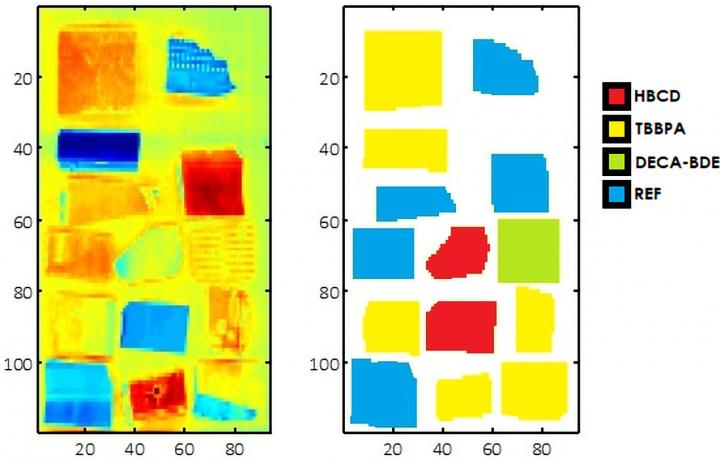
Credit: D. Caballero, M. Bevilacqua and J.M. Amigo
If we are ever to reduce the quantity of plastics being dumped into the environment, efficient recycling is essential. Currently, many plastics cannot be economically sorted to enable their recycling. For example, many plastics contain flame retardants to increase their resistance to ignition, reduce flames spreading, minimise smoke formation and to prevent the plastic from dripping. The amount of flame retardant added to plastics and the type used can vary considerably, due to the need to tailor the plastic to its particular application and to meet safety standards. However, only plastics of the same type and with similar flame retardants can be recycled together. Therefore, before recycling can occur, plastics need to be sorted, not only by the type of plastic (acrylonitrile butadiene styrene and polystyrene in this study) but also by any flame retardant added. Without sorting, recycling cannot take place.
In a paper published in JSI–Journal of Spectral Imaging, an Open Access, peer-review journal published by IM Publications Open, José Amigo and co-authors detail a method using near infrared hyperspectral imaging and chemometrics that can sort between different types of plastic and between different additions of flame retardant.
Hyperspectral imaging collects an image of an area and, at the same time, a spectrum for each individual pixel of that image. Chemometrics is a data analysis technique that can discover hidden patterns within data (in this case spectral data) and help build a model to identify parts of the image by their chemical composition. Using an imaging technique for this recycling application is important, since it can identify individual pieces of plastic and any flame retardant they may contain from among many others, for example, on a conveyor belt in a recycling plant.
José Amigo commented “Recycling plastics has been studied for many years. Indeed, some commercial cameras separating a limited number of plastic types have been available for some time. However, in this research, we wanted to go a step further to separate plastics containing flame retardants. Moreover, the proposed methodology was tested with real samples that can be found in current recycling lines.”
###
Media Contact
José Amigo
[email protected]
Original Source
https:/
Related Journal Article
http://dx.




